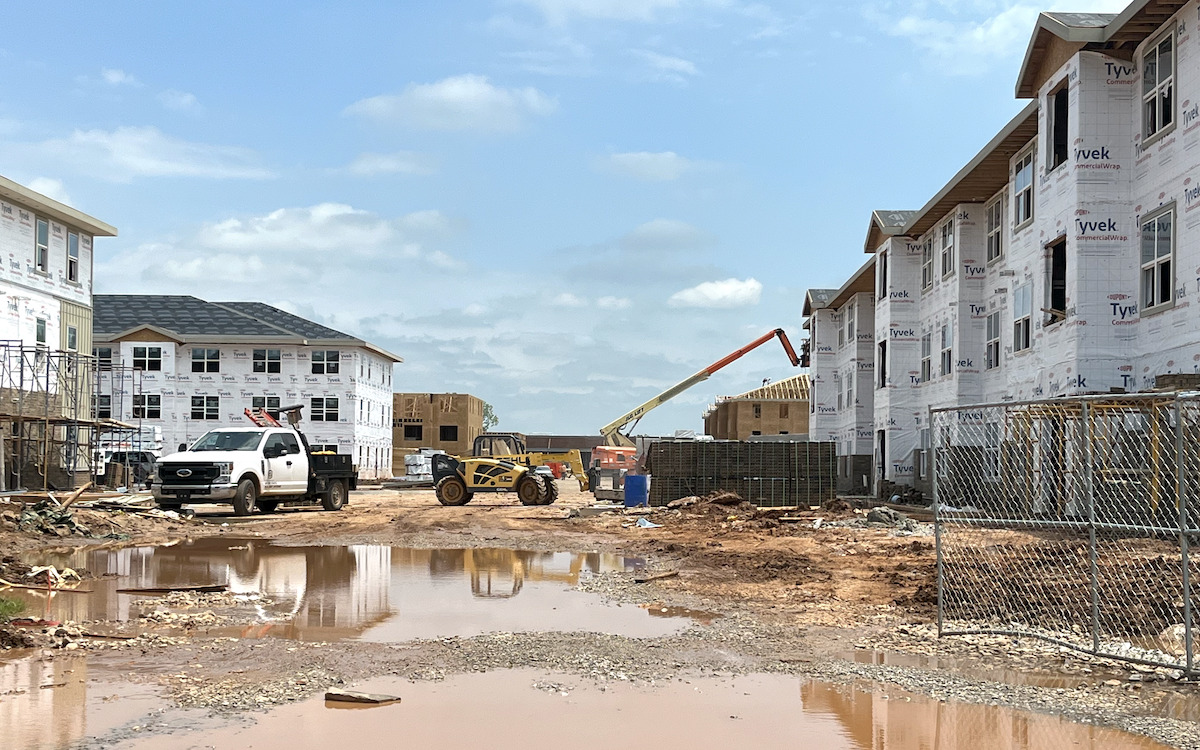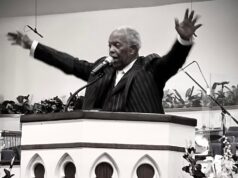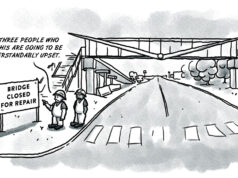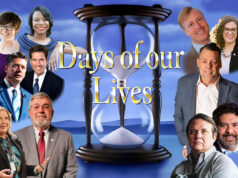
With Oklahoma City voters approving the extension of the MAPS one-cent sales tax for six years by an overwhelming margin to build a new $900 million arena, attention now turns to the granular details of developing the project, including where the arena will be located, who will design it and what a proposed community benefits agreement will look like.
The latter is a component pushed by Ward 2 Councilman James Cooper and Ward 4 Councilman Todd Stone ahead of the arena-tax election. In September, the OKC City Council voted 8-1 to authorize City Manager Craig Freeman to negotiate a community benefits agreement that would mandate compensation of at least $15 an hour for arena workers and hiring efforts targeting the most economically hard-hit areas of the city once the facility opens.
But what all of that might look like and how it will be developed remain unknown, and the progress toward striking a final agreement is likely to be slow going.
During an interview after the Dec. 12 election, Freedman said a working group is being developed to flesh out conversations on the community benefits agreement, which aims to help ensure that such a massive project delivers on some of the promises made in the pre-election brochure.
“I think the spirit behind it from Councilman Cooper’s perspective is making sure that, as we’re doing this great project for our community, we make sure that we’re trying to bring everyone along with us — that you just don’t leave people behind,” Freeman said. “So it’s really about trying to open the doors for making sure people are paid fair wages from some of these jobs that come from the arena. It’s mostly focused on the operations of the arena. So that’s really the spirit of trying to bring the whole community along.”
During the Sept. 26 council meeting where pursuing a CBA was authorized, Stone said it could go a long way toward creating jobs where they’re needed most, especially skilled labor professions that are becoming harder to fill.
“Part of the reason I support Councilman Cooper’s resolution is there are three components to it,” Stone said in September. “The first one being programs for jobs. We’ve been talking about how we can build that pipeline to construction as well as hospitality to where people who may not have the skill sets they need are able to learn those skill sets.”
Labor peace agreement key to process

As part of the process, city leaders expect the establishment of a labor peace agreement to be part of the broader CBA. A labor peace agreement is an arrangement between a union and an employer under which one or both sides agree to waive certain rights under federal law about union organizing and related activity, according to the U.S. Chamber of Commerce website.
For those looking at potentially comparable community benefits agreements, the City of Milwaukee and the Fiserv Forum can serve as a recent example. In that case, the team and the city negotiated the deal along with the arena management company. The Bucks do not own the arena, but the team contributed $174 million toward its construction. The owners of the Thunder are contributing about $50 million toward the $900 million project in Oklahoma City
Cooper used Milwaukee’s CBA as his inspiration for proposing an agreement here. Peter Rickman, who negotiated the labor peace agreement in Milwaukee, told NonDoc earlier this year he believes it can work in OKC as well.
“I think policymakers in OKC understand the value of it and have reached out to me to talk about what we did here,” Rickman said. “I think they recognize that when municipalities are funding these projects, that in and of itself is not a public good. But when it comes with good union jobs at the forefront, it becomes something that can benefit a lot of people.”
The city-owned arena is expected to create up to 10,000 jobs during its construction, according to economic impact studies. It could also create several thousand jobs after it opens. While the Thunder will be the primary tenant in the new arena, the CBA won’t be negotiated with the team.
“One of the things is developing this working group that would look at this potential for a labor peace agreement, what it is, how other organizations in other cities have implemented it, and how best to address that and potentially come back with recommendations,” Freeman said. “Ultimately, the majority of this would be focused toward the operator of the arena.”
And there will be plenty of time to talk about it in the interim. The new arena is not scheduled to open for five years, and Freeman said the community benefits agreement will come together closer to its opening date.
“Right now, our letter of intent with the Thunder addresses a timeline target of at least by the 2029-2030 season that we would have the arena open,” Freeman said. “That would be about the summer of ‘29. It’s not saying that we couldn’t go earlier than that but, basically, you would be looking at that time frame of when we would go into a new operations agreement whether it’s with the existing operator or with a new operator whoever is going to be operating the arena, that’s when that agreement would go into effect.”
But some developments could unfold before then. Freeman said the process of crafting the agreement will be ongoing and will start well before the arena is expected to open.
“We want to make sure that we’re making progress evaluating this and evaluating how we can incorporate those (ideas of the working group) into an agreement, doing the research of the work of looking at the potential for the labor peace agreement and how that might work,” Freeman said. “So, we want to make sure that we’re making progress but there is time for that to work through.”
Cooper: ‘Start thinking now of arena construction jobs’
As attention turns to unanswered questions like the terms of the community benefits agreement, Cooper said Thursday he hopes the time between now and when the arena opens in 2029 is used wisely.
“It’s an agreement for those workers. They will make $15 an hour, and we will target parts of town and communities historically marginalized, underrepresented, unemployed and underemployed,” Cooper said. “We know all of that. But in my mind what this means is we have five interim years to think of this as four buckets. You have the arena jobs bucket, but that’s five years from now. But what about the arena construction jobs? Shouldn’t we do the same work ahead of time? It’s much closer. It’s about a year away.”
The United States, like other countries, has been facing a labor shortage when it comes to construction professions. Between 2020 and 2022, applications for jobs like electricians and plumbers dropped by 49 percent. As a result, the construction industry has a shortage of about 500,000 workers, according to a recent report in Axios.
With several major construction projects on the horizon in Oklahoma County — including a $300 million new jail and dozens of projects totaling hundreds of millions of dollars in Oklahoma City Public Schools building projects — Cooper would like to see the city do all it can to encourage contractors to develop apprenticeship programs.
“We need to start thinking right now about the arena construction jobs,” Cooper said. “Let’s do an inventory for all four of these buckets. Where are we short city jobs, where are we short in the private sector, what types of jobs will it take to build an arena, and what type of jobs exist in an arena? Where are we short with the trades across the city? Let’s use the next five years to replenish the trades, replenish our city jobs and replenish the private sector. To quote Russell Westbrook, ‘Why not.’”
Freeman said an apprenticeship program likely would not be part of the community benefits agreement, but that should not prohibit the city from helping employers recruit more workers to train in trades.
“I think it’s something that can happen,” Freeman said. “It’s not really directly addressed within the community benefits agreement. We have talked to a few companies and a few of the contractors locally even, and they have all acknowledged that they want to help encourage apprenticeships through their companies but also through their subcontractors in order to grow the different trades and service providers. They want to encourage apprenticeships as well but for us, I think that we would have to manage that because we want to make sure that it doesn’t negatively affect our ability to contract for those services, like unreasonably increasing the cost. I think there are ways to work with contractors to encourage that but do it in a way that they think will grow these industries.”
The City of OKC’s letter of intent with the Oklahoma City Thunder
https://nondoc.com/wp-content/uploads/2023/12/Thunder-Letter-of-Intent-with-City-of-OKC.pdf” viewer=”google”]




















